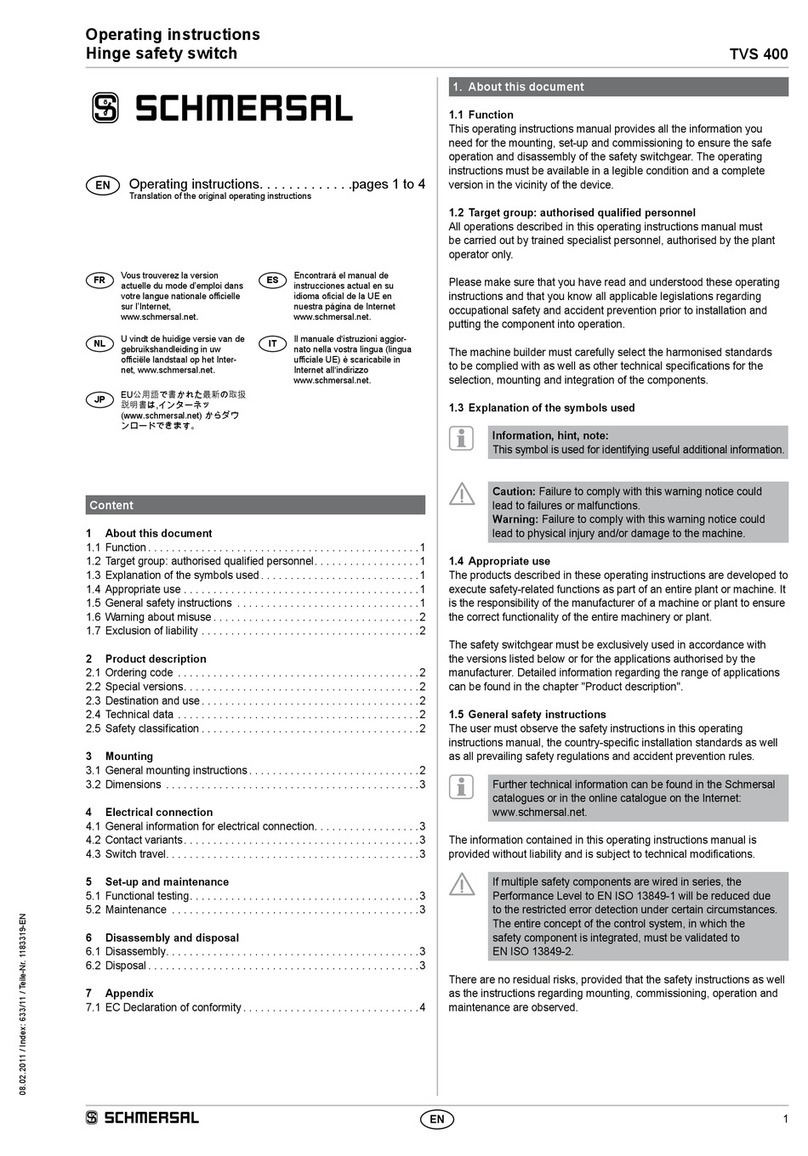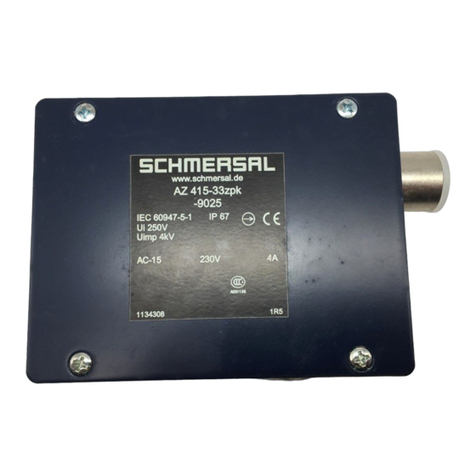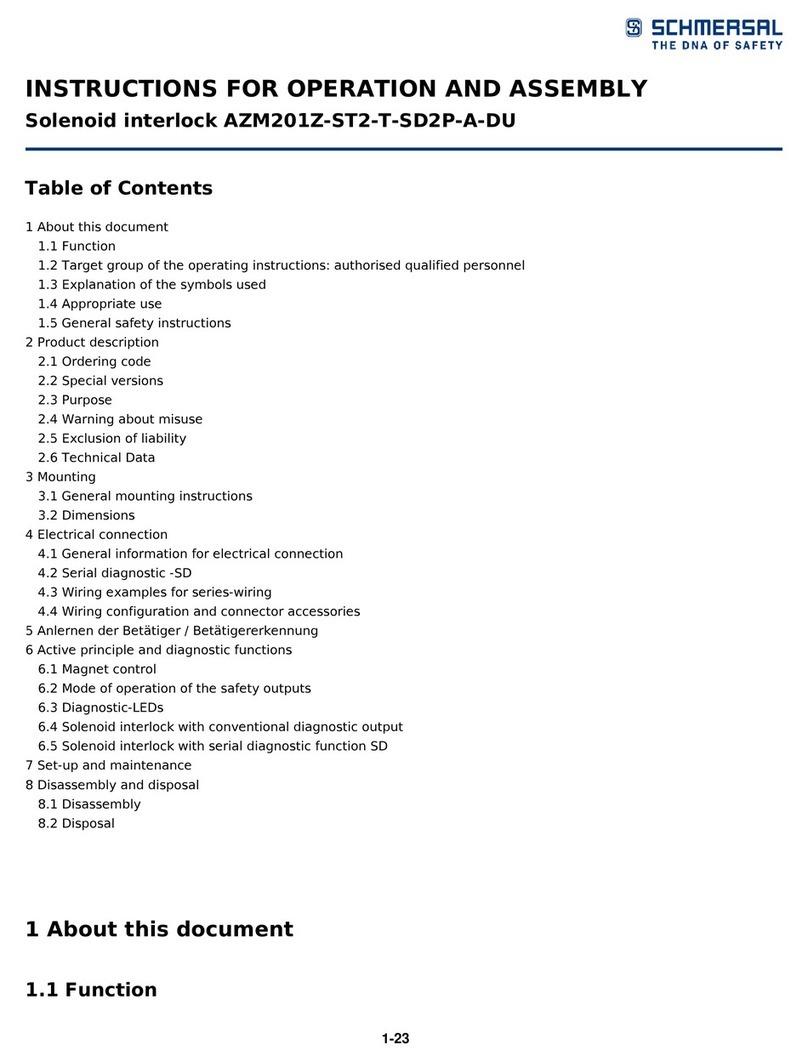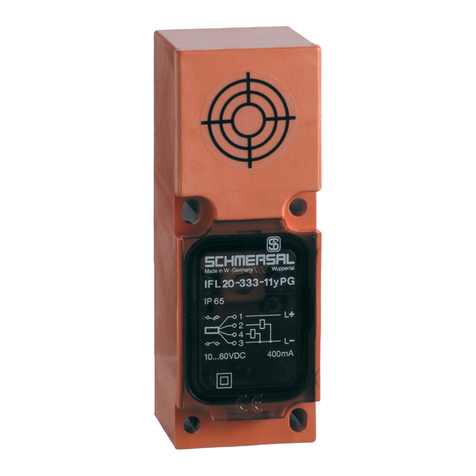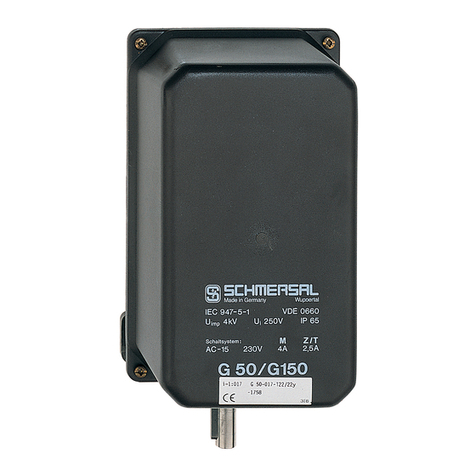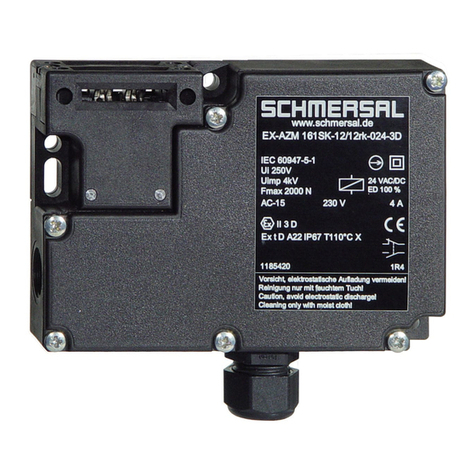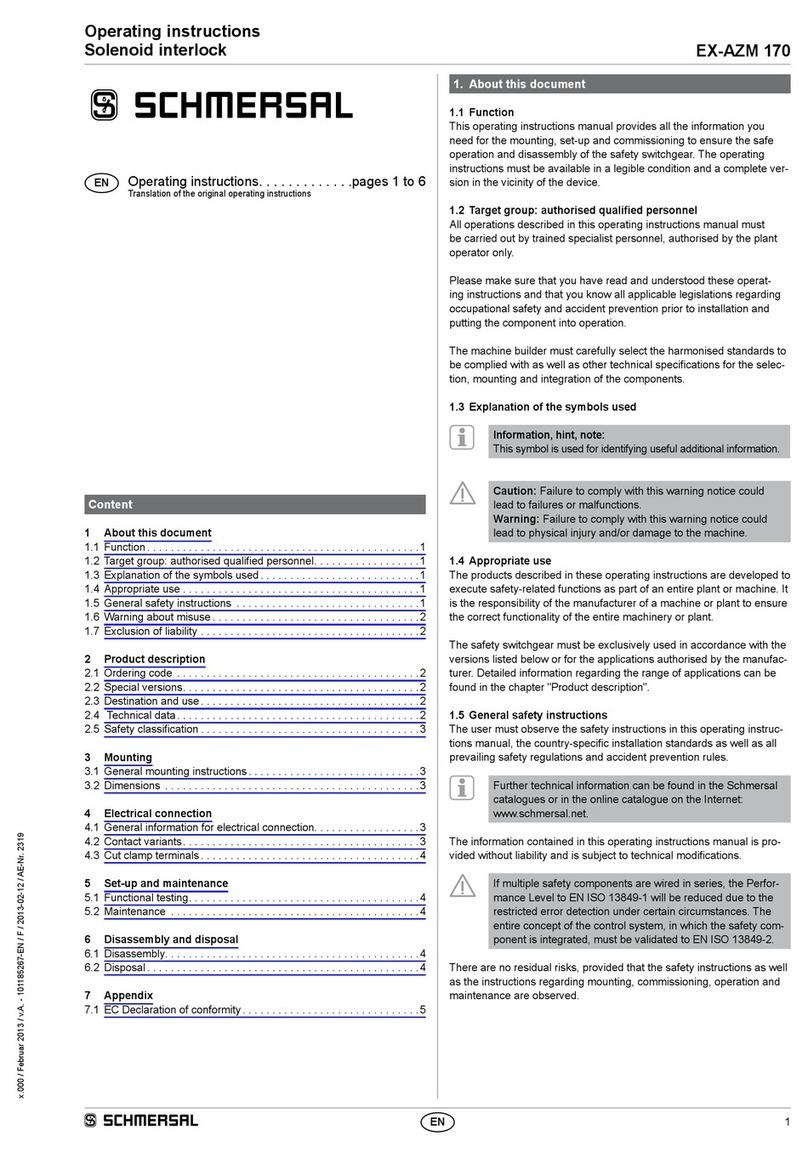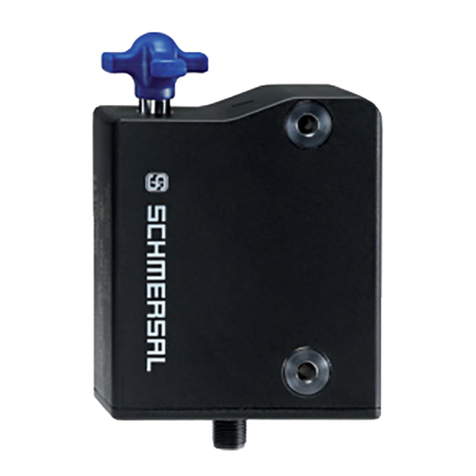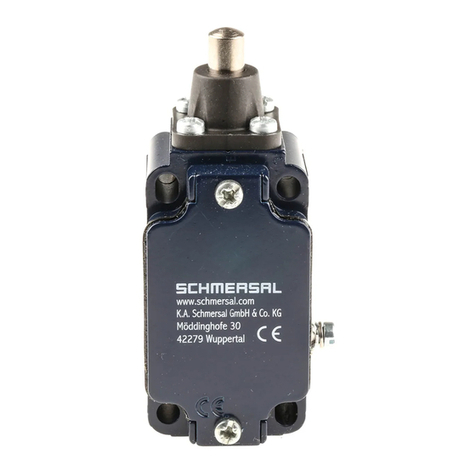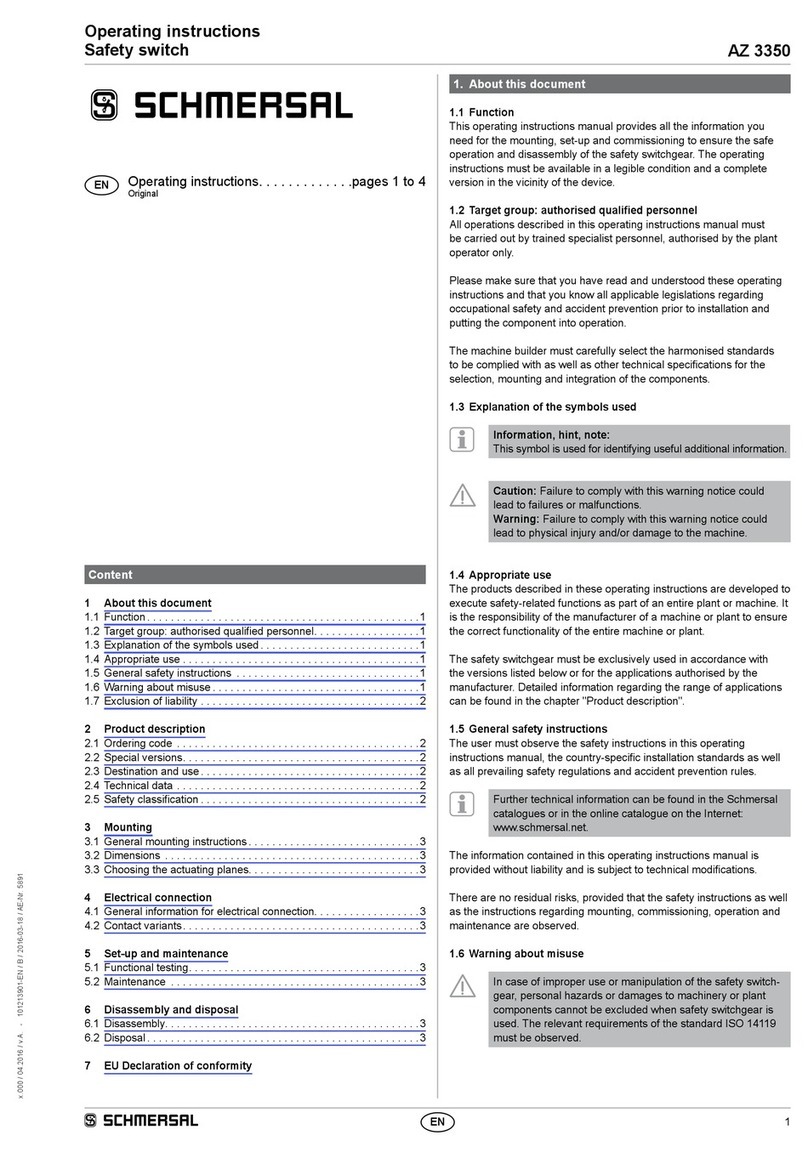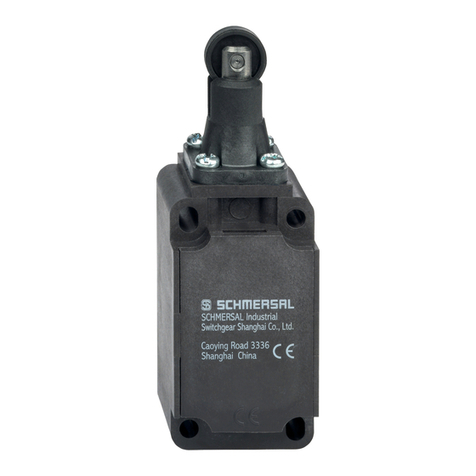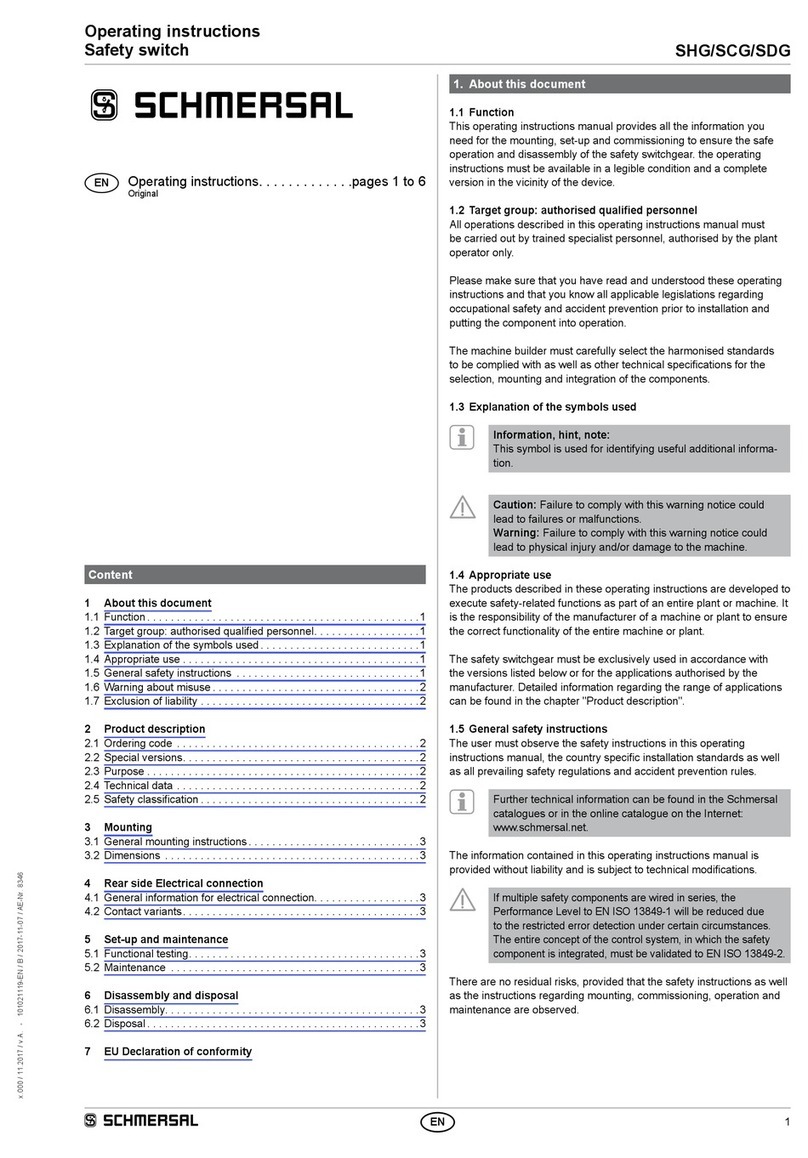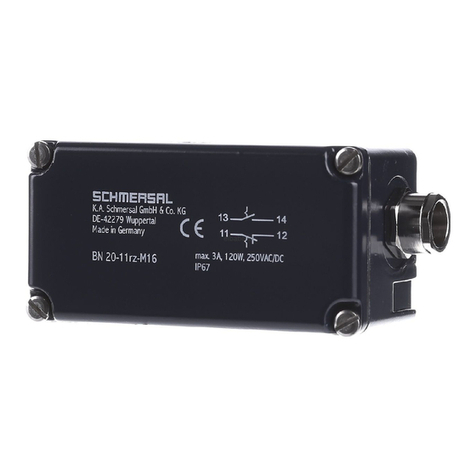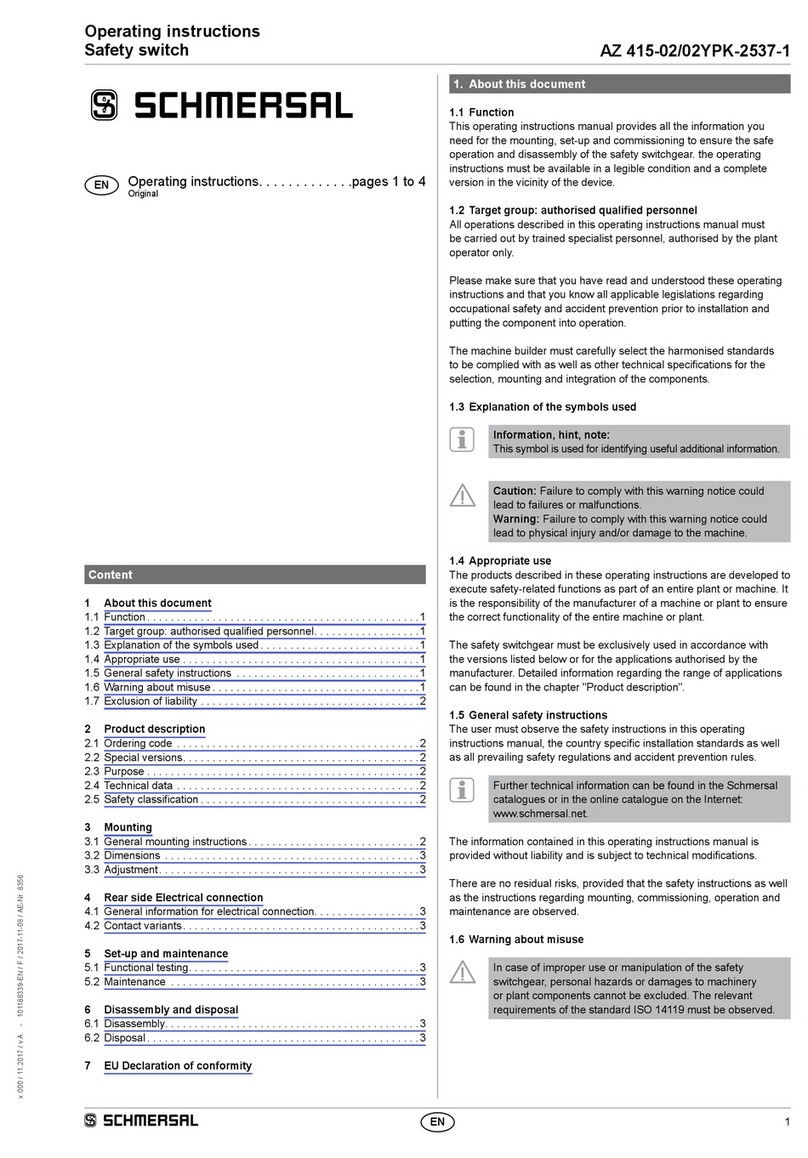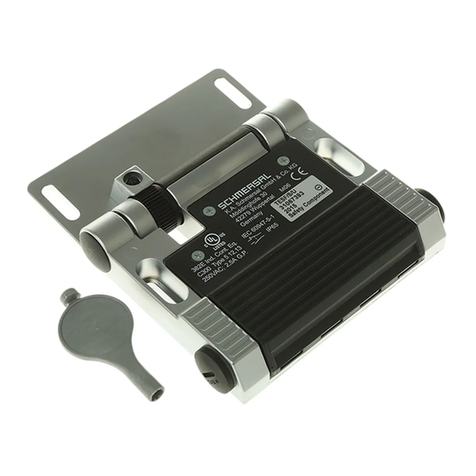
2
Operating instructions
Safety switches AZ 200 AS
EN
Warning about misuse
In case of improper use or manipulation of the safety switch-
gear, personal hazards or damages to machinery or plant
components cannot be excluded. The relevant requirements
of the standard ISO 14119 must be observed.
1.6 Exclusion of liability
We shall accept no liability for damages and malfunctions resulting from
defective mounting or failure to comply with this operating instructions
manual. The manufacturer shall accept no liability for damages
resulting from the use of unauthorised spare parts or accessories.
For safety reasons, invasive work on the device as well as arbitrary
repairs, conversions and modifications to the device are strictly
forbidden, the manufacturer shall accept no liability for damages
resulting from such invasive work, arbitrary repairs, conversions and/or
modifications to the device.
2. Product description
2.1 Ordering code
This operating instructions manual applies to the following types:
AZ 200 ST-T-AS
Only if the information described in this operating instructions
manual are realised correctly, the safety function and
therefore the compliance with the Machinery Directive is
maintained.
2.2 Special versions
For special versions, which are not listed in the order code below 2.1,
these specifications apply accordingly, provided that they correspond to
the standard version.
2.3 Purpose
The non-contact, electronic safety switchgear is designed for
application in AS interface Safety at Work and is used for monitoring the
position of movable guard systems.
The safety switchgears are classified according to ISO 14119
as type 4 interlocking devices.
The safety function consists in safely switching off the code
transmission when the safety guard is opened and maintaining the safe
switched off condition for as long as the safety guard is open.
An AS-Interface Safety at Work component functions on the basis of
an individual code generator (8 x 4 bit). This safety code is cyclically
transmitted over the AS-i network and monitored by the safety monitor.
The user must evaluate and design the safety chain in
accordance with the relevant standards and the required
safety level.
The entire concept of the control system, in which the safety
component is integrated, must be validated to the relevant
standards.
2.4 Technical data
Standards: IEC 60947-5-3, EN 62026-2,
ISO 13849-1, IEC 61508, IEC 62061
Enclosure: glass-fibre reinforced thermoplastic, self-extinguishing
Mechanical life: ≥ 1 million operations
Latching force: 30 N
Protection class: IP 67
Protection rating: II,
P
Overvoltage category: III
Degree of pollution: 3
Termination: Connector M12 x 1, 4 pole
Tightening torque for the cover screws: 0.7 ... 1 Nm (Torx T10)
EMC rating: according to EN 61000-6-2
Switching distances to IEC 60947-5-3:
Rated operating distance Sn:6.5 mm
assured switching distance sao:4 mm
assured switch-off distance sar:30 mm
Hysteresis: max. 1.5 mm
Repeat accuracy: < 0.5 mm
Electrical data AS-Interface:
Rated operating voltage Ue1:26.5 ... 31.6 VDC,
through AS-Interface, reverse polarity-proof
(stabilised PELV unit)
Rated operating current le1:0.1 A
Rated impulse withstand voltage Uimp:800 V
Rated insulation voltage Ui1:32 VDC
No-load current lo1:typically 0.05 A
Device insulation: internal short-circuit proof
AS-i specification:
- Version: V 2.1
- Profile: S-0.B.F.E
AS-Interface Inputs: Datanbits D0 … D3
condition static 0 or dynamic code transmission
AS-Interface Outputs: none
Input module address: preset to address 0,
can be changed through AS-interface bus master
or hand-held programming device
Diagnostic indication:
- LED green-red: AS-Interface supply voltage /
communication error or slave address = 0
- LED red: Internal device error
- LED yellow: Internal device error
Ambient conditions:
Ambient temperature: −25 °C ... +70 °C
Storage and transport temperature: −25 °C ... +85 °C
Relative humidity: 30% ...95%, no condensation
Resistance to vibration: 10 ... 150 Hz (amplitude 0.35 mm)
Resistance to shock: 30 g / 11 ms
Actuating speed: ≤ 0.2 m/s
Switching frequency: ≤ 1 Hz
Response time: < 60 ms
Duration of risk: < 120 ms
Time to readiness: < 4 s
1. Use isolated power supply only
2. For use in NFPA 79 Applications only
3. Adapters providing field wiring means are available from
the manufacturer. Refer to manufacturers information.
2.5 Safety classification
Standards: ISO 13849-1, IEC 61508, IEC 62061
PL: e
Control Category: 4
PFH: 4 x 10-9 / h
SIL: suitable for SIL 3 applications
Mission time: 20 years
